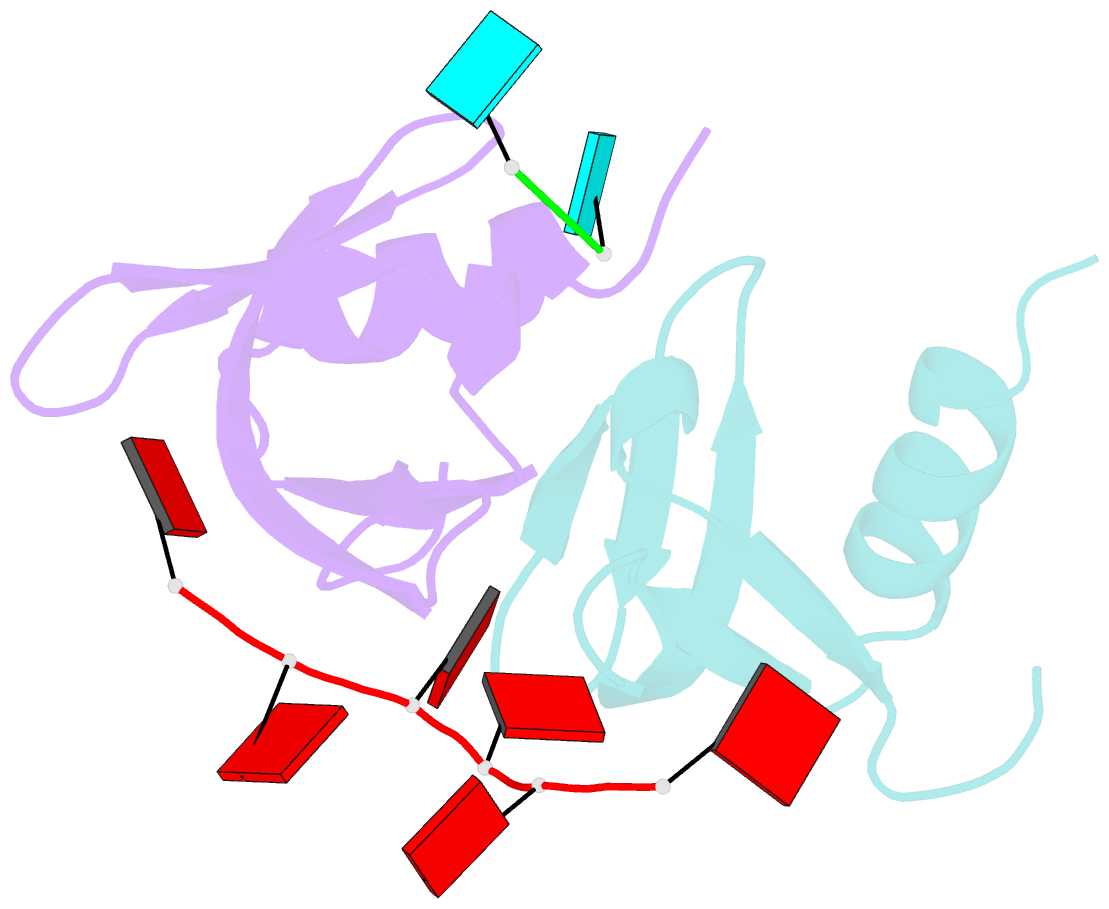Summary information and primary citation
- PDB-id
- 5new; SNAP-derived features in text and JSON formats;
DNAproDB
- Class
- RNA
- Method
- X-ray (2.511 Å)
- Summary
- RNA-RNA base stacking in the crystal structure of an hfq6:RNA dimer
- Reference
- Schulz EC, Seiler M, Zuliani C, Voigt F, Rybin V, Pogenberg V, Mucke N, Wilmanns M, Gibson TJ, Barabas O (2017): "Intermolecular base stacking mediates RNA-RNA interaction in a crystal structure of the RNA chaperone Hfq." Sci Rep, 7, 9903. doi: 10.1038/s41598-017-10085-8.
- Abstract
- The RNA-chaperone Hfq catalyses the annealing of bacterial small RNAs (sRNAs) with target mRNAs to regulate gene expression in response to environmental stimuli. Hfq acts on a diverse set of sRNA-mRNA pairs using a variety of different molecular mechanisms. Here, we present an unusual crystal structure showing two Hfq-RNA complexes interacting via their bound RNA molecules. The structure contains two Hfq6:A18 RNA assemblies positioned face-to-face, with the RNA molecules turned towards each other and connected via interdigitating base stacking interactions at the center. Biochemical data further confirm the observed interaction, and indicate that RNA-mediated contacts occur between Hfq-RNA complexes with various (ARN)X motif containing RNA sequences in vitro, including the stress response regulator OxyS and its target, fhlA. A systematic computational survey also shows that phylogenetically conserved (ARN)X motifs are present in a subset of sRNAs, some of which share similar modular architectures. We hypothesise that Hfq can co-opt RNA-RNA base stacking, an unanticipated structural trick, to promote the interaction of (ARN)X motif containing sRNAs with target mRNAs on a "speed-dating" fashion, thereby supporting their regulatory function.





